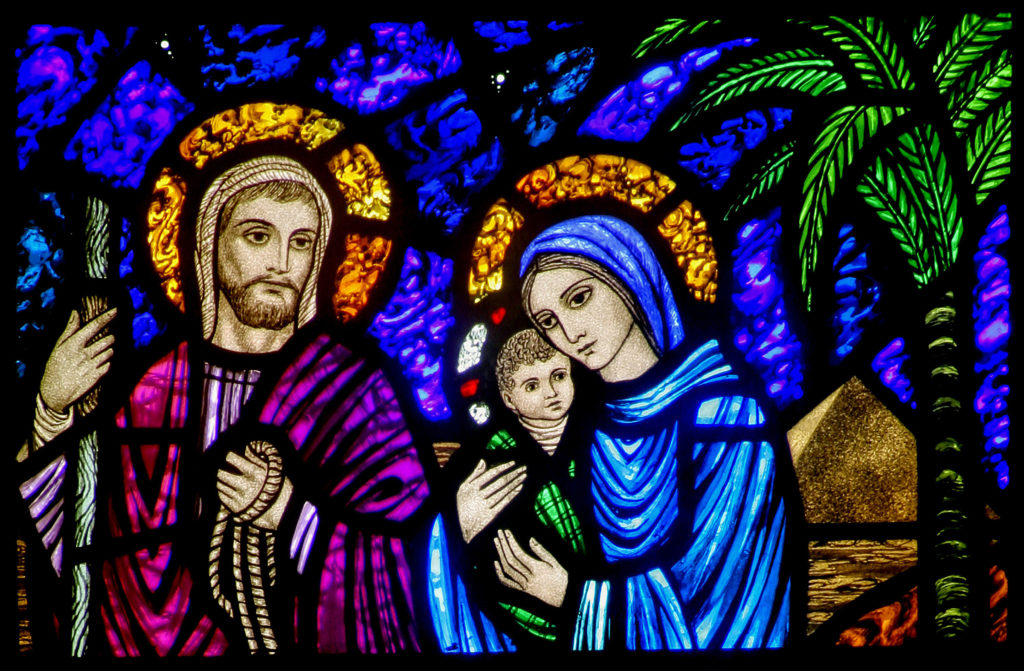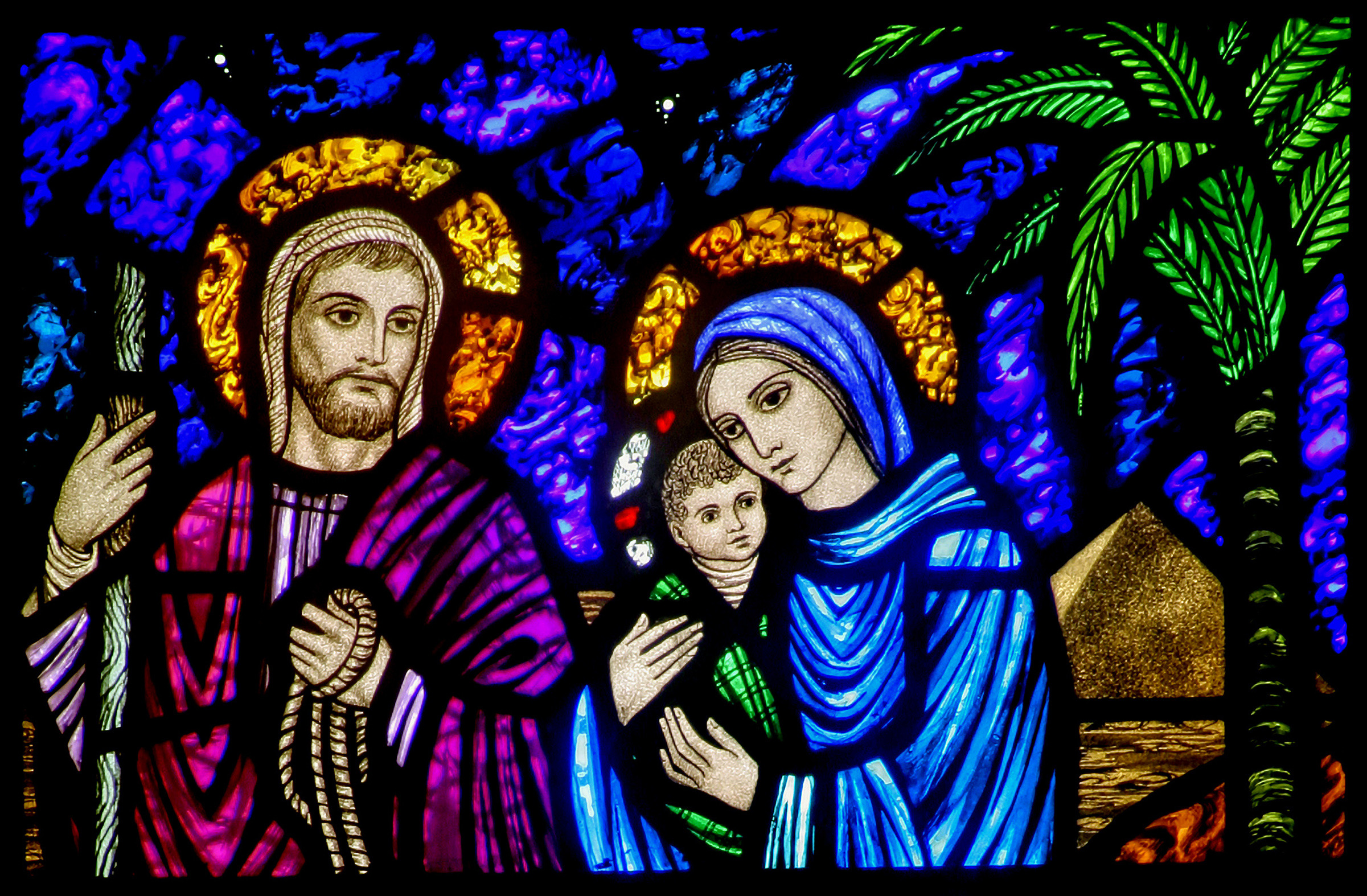
Novenas, posadas, pageants and Nativities are just some of the ways Catholics around the Diocese of Phoenix are preparing for the Christmas season.
[quote_box_right]
The Christmas Season
Dec. 25: Christmas
Dec. 26: St. Stephen
Dec. 27: St. John the Evangelist
Dec. 28: Holy Innocents
Dec. 29: Holy Family
Jan. 1: Mary, Mother of God
Jan. 5: Epiphany
Jan. 12: Baptism of the Lord
[/quote_box_right]Christmas begins with the Solemnity of the Nativity of the Lord on Dec. 25 and continues through His baptism, celebrated on Jan. 12 this liturgical year.
Many Hispanic families are amid a novena that will end Dec. 24. It’s a nearly 80-year tradition for Vince Bejarano. The extended family gathers nightly for a novena to el Santo Niño de Atocha with around 40 in attendance by Christmas Eve.
There are so many on their knees, there’s barely room to walk, he said. Bejarano, a St. Mary Magdalene parishioner, loves it when his father asks the kids to read parts of the novena. His girls are 8 and 6 years old.
“After the novena we break out into renditions of ‘Silent Night,’” Bejarano said. Dancing, well wishes and more food follow the singing.
Franciscan Father Vince Mesi, pastor of St. Mary’s Basilica, said the use of the crèche or Nativity set — a tradition St. Francis started in 1224 — is a “beautiful way to celebrate the whole Christmas season because it keeps us mindful of the reason for Christmas.”
Not only does it help Catholics grasp the humility of God who took the form of a helpless child, but the purity of God, Fr. Mesi said. Bethlehem means “House of Bread” and the shepherds first saw Jesus in a manger, a feeding trough.
“Already as a baby, Jesus was feeding the people,” Fr. Mesi said. “St. Francis once again saw the humility of God in the Eucharist. God who is almighty comes down upon our altar in the form of a piece of bread.”
Nasma Hommi, a parishioner at St. Henry in Buckeye, makes a similar connection between the baby Jesus and the Eucharist. Christmas festivities — neither a teaser gift nor a lick of food — don’t begin until the family returns from Christmas Mass.
She received simple gifts as a child growing up in Iraq.
“Every child wakes up in the morning searching their beds for gifts,” Hommi said.
Her two teenagers grew up in the United States and are more used to colorfully wrapped gifts under the tree. They relish traditional food though.
“The whole house would smell like pacha. Even if they’re born in the United States, the kids still can’t wait for Christmas,” Hommi said.
It’s one of two times of the all the women in the family make the lamb dish flavored with spices. Hommi likened it to the Mexican tradition of tamales.
It’s also a family affair to make klecha, a traditional pastry filled with dates, walnuts or coconut, that is then served to guests.
“It’s a happy occasion. You have to make something sweet with it,” Hommi said.
Both the Hommi and Bejarano family also use Christmas as a time to remember their ancestors. It’s a Chaldean tradition to spend part of Christmas Day with a relative who lost a spouse or sibling that year — like her father.
Bejarano and his seven brothers spend time at the gravesite of each deceased relative every Dec. 24. They bring lit candles, offer a prayer and reminisce. Those candles later surround the family’s Nativity scene.
Other homes and parishes celebrate Christmas through las posadas, a reenactment of Mary and Joseph’s search for lodging before Christ’s birth. Religious education students at Blessed Sacrament in Scottsdale held las posadas Dec. 16-17. “We try to do something each year that helps to bring the message of the Incarnation alive for the community,” said Larry Fraher, director of catechetical ministry.
He also loves the tradition of setting out luminarias to light the way for the Christ Child.
Amid the celebration of new life, the Church also calls Catholics to think about Christ’s death throughout the Christmas season. The holly serves as a reminder of the crown of thorns with the red berries symbolic of the blood He would shed.
The feast of St. Stephen, the first martyr, falls Dec. 26 with the feast of St. John the Apostle and the feast of the Holy Innocents immediately following. The Church began celebrating the feast of the Holy Family the first Sunday after Christmas in the early 20th century to encourage family life. The Solemnity of Mary, Holy Mother of God Jan. 1, follows it. It calls Catholics to bear God within their own lives as Mary bore Him in her womb, Fr. Mesi said.
“She is the model of our discipleship and holiness,” he said.
This year, the Church will celebrate the visit of the Magi on the feast of the Epiphany Jan. 5. “Epiphany” is a Greek word meaning “manifestation,” so the feast celebrates Christ’s manifestation to the kings who brought gifts from afar.
“The main focus is a beautiful symbolic way of telling us that Christ has come as a light for all nations,” Fr. Mesi said, noting that the readings, music and prayers reflect that.
Some families model the Magi’s idea of gift giving by offering gifts for those in need. Parishioners at St. Catherine Labouré in Chino Valley will celebrate the feast of the Epiphany with a collection of gifts for babies and toddlers served by nearby Birthline in Prescott or food for an area food bank.
The Feast of the Epiphany is also a time for a Rosca de Reyes, or a king’s cake, and for home blessings. The Christmas season ends Jan. 12 with Jesus’ baptism in the Jordan, celebrating the Lord’s anointing and beginning of public ministry.







